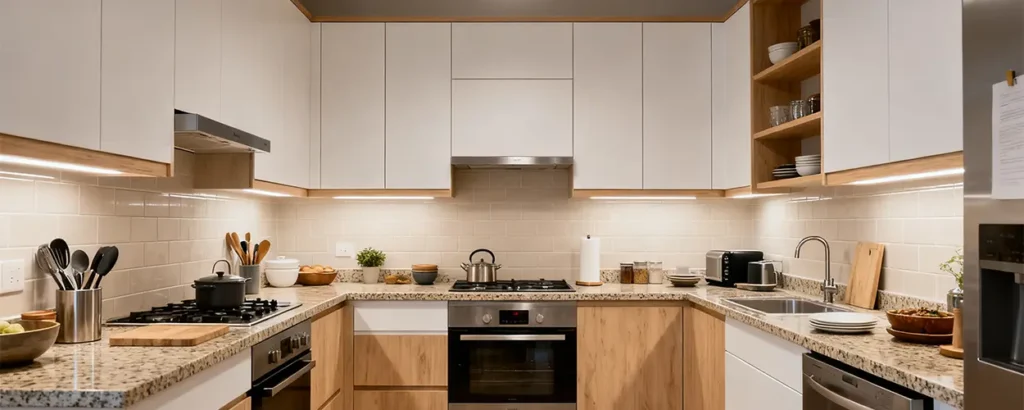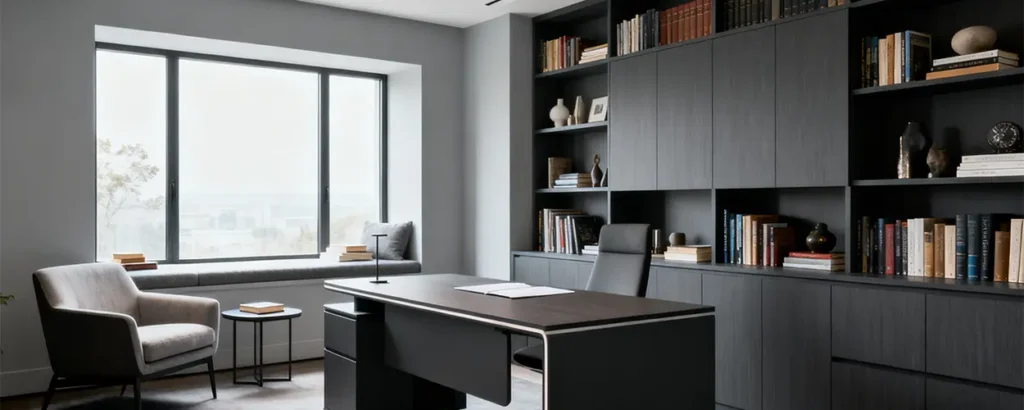Is MDF swelling ruining your furniture projects? Discover how to stop moisture damage in its tracks. This guide reveals essential sealing techniques and explains why moisture-resistant MDF (MR MDF) is a game-changer for humid environments like bathrooms and kitchens.
MDF’s vulnerability to water is its biggest weakness. When moisture seeps in, it causes the wood fibers to expand, leading to irreversible swelling, especially on vulnerable edges. But this doesn’t mean you must avoid MDF in damp areas. By selecting the right type of board and applying a proper sealing protocol, you can create durable, moisture-resistant pieces that last for years. Let’s dive into the solutions.
Understanding Why MDF Absorbs Water
The Science Behind MDF Swelling
MDF is like a sponge because of its physical composition. It’s made of fine wood fibers pressed together with adhesive. This process creates a dense panel with millions of tiny pores that readily absorb water vapor and liquid. Unlike solid wood, which has a longitudinal grain, MDF fibers are random, allowing moisture to penetrate equally in all directions.
The edges are the most vulnerable part of any MDF project. Cutting the panel exposes the open ends of all those compressed fibers, creating a direct pathway for moisture to wick deep into the core. This is why a small spill can cause a shelf edge to swell to twice its original thickness, while the face remains relatively unaffected. Understanding this helps target your protection efforts effectively.

Your First Line of Defense: Moisture-Resistant MDF
What Makes MR MDF Different?
For projects destined for kitchens, bathrooms, or laundry rooms, your best starting point is Moisture-Resistant MDF (MR MDF). This isn’t standard MDF with a simple coating; it’s manufactured with special water-repellent additives and resins blended into the wood fibers before pressing. These additives, often a waxy substance, help the panels repel moisture and significantly slow down the rate of water absorption.
While often called “waterproof MDF,” it’s more accurate to think of it as highly water-resistant. It can withstand occasional splashes and high humidity far better than standard MDF, but it is not impervious to prolonged, standing water. MR MDF is identifiable by its green-tinted core, a visual cue that distinguishes it from the tan/brown core of standard boards. It’s the recommended choice for any application where humidity levels fluctuate.
The Critical Step: Sealing MDF Correctly
Creating an Impermeable Barrier
Even if you use MR MDF, proper sealing is non-negotiable. A sealant’s job is to create a continuous, impermeable film over the entire surface, locking out ambient humidity and preventing accidental spills from causing damage. The goal is to encapsulate the MDF completely, leaving no path for moisture to find its way to the core.
For the best results, use a high-quality, oil-based primer-sealer or a shellac-based product like BIN. These primers are excellent at sealing because they don’t raise the wood fibers like water-based products can. They create a hard, protective shell. Apply a generous coat to all surfaces, paying extra attention to the edges, which may require two or three thin coats to fill the porous end-grain completely.While often called “waterproof MDF,” it’s more accurate to think of it as highly water-resistant. It can withstand occasional splashes and high humidity far better than standard MDF, but it is not impervious to prolonged, standing water. MR MDF is identifiable by its green-tinted core, a visual cue that distinguishes it from the tan/brown core of standard boards. It’s the recommended choice for any application where humidity levels fluctuate.
Mastering Edge Sealing Techniques
Since edges are the primary failure point, they demand special attention. After applying a primer-sealer, you can enhance protection further. Using a waterproof wood glue to coat the edges is an effective trick; the glue soaks in and cures, hardening the fibers. Another professional method is applying edge banding, which adds a solid plastic or wood veneer layer, physically blocking moisture.
For a perfectly smooth, sealed edge, lightly sand the primed surface with 220-grit sandpaper once it’s fully dry. This ensures any raised fibers are smoothed out. If you plan to paint, you can then proceed with your topcoats, knowing that each layer of a quality paint adds another level of protection against moisture intrusion.

Proactive Measures and Problem Solving
Preventing Moisture Damage in Humid Climates
Beyond sealing, your environment matters. In regions with high humidity, ensure your workshop or home has adequate ventilation and climate control. Using a dehumidifier can significantly reduce the ambient moisture that MDF slowly absorbs over time, preventing the subtle warping and swelling that can occur even without a direct spill.
When installing MDF cabinets or shelves in a bathroom, keep them away from direct water sources. Don’t mount MDF shelves directly over a shower unless they are exceptionally well-sealed on all sides. Always wipe up spills or condensation immediately. These simple habits dramatically extend the life of MDF in challenging environments.
What to Do If Swelling Occurs
If you catch swelling early, you might be able to fix it. First, dry the area thoroughly with a hairdryer on a low setting. Once dry, you can sometimes sand the swollen edge down carefully. However, if the swelling is severe and the core has delaminated, the damage is often permanent. In this case, the most reliable solution is to replace the panel with MR MDF and ensure it is sealed correctly this time.

